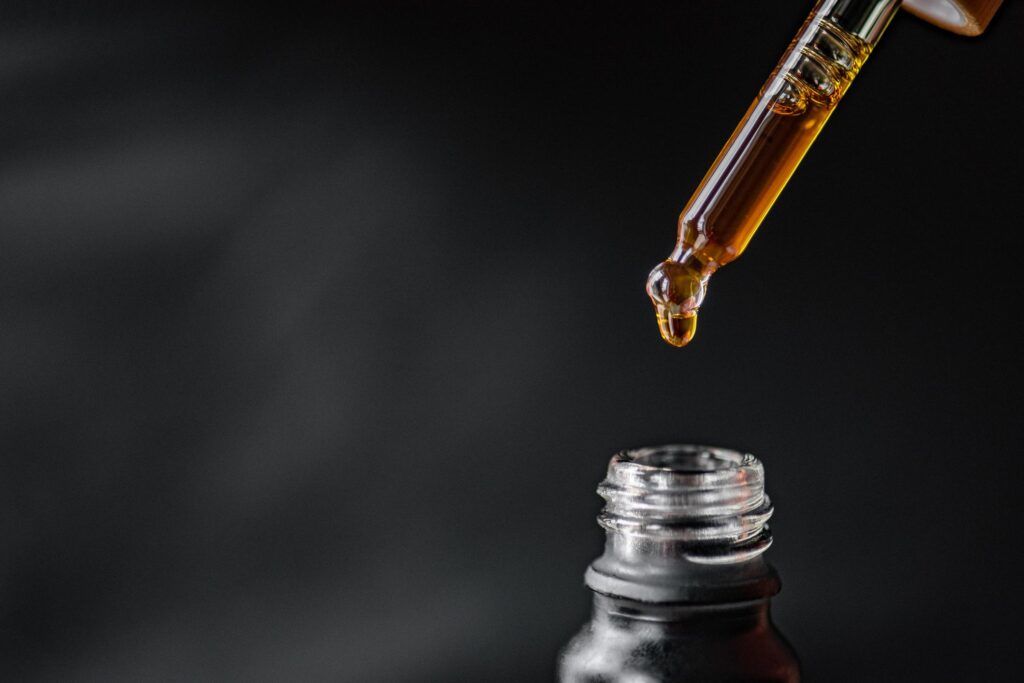
In 2018 Donald Trump signed the law according to which hemp became legal. Since that time, cannabinoids underwent a boom, especially the use of CBD products. Pure CBD oil and raw CBD are put on everybody’s A-list. They are made from the same hemp beginning, but they are still different. To classify this plant as an industrial-grade product in America, it should contain less than 0.3% THC (Tetrahydrocannabinol). This way, the remedy becomes free from all potential psychoactive effects that can be caused by other compounds found in cannabis plants.
Nonetheless, not everyone knows what the difference between pure CBD and raw CBD is. We will explain these things in this article in simple terms without boring chemistry.
Pure CBD Oil
Pure CBD oil is extracted from hemp through a variety of methods. Here specialists use only the top of the plant because it has a higher CBD concentration. It is the reason for the high price of the product.
Also, the taste of CBD oil is delicious and resembles nuts. The hemp concentration is the result of heating. People use pressure and high heat to evaporate the solution away from the hemp plant to get the CBD oil directly. To differentiate pure from impure oil, you need to observe whether that substance diffuses into the solvent, leaving no solvent material behind after evaporating.
The process of oil extraction consists of 2 steps:
- Winterization
- Short Path Distillation
Winterization is a removal process of unwanted chemicals that were extracted from the hemp plant, for example, fats and lipids. Winterization is very important because the oil is extracted at a high temperature. This intense extension removes all extra elements. The ready-made oil is unrefined and needs additional purification.
Then the strong alcohol is added to the product, and the content is jumbled properly until completely mixed. After that, it is placed in a freezer overnight. The oil shouldn’t contain fats, and the only way to remove them is to use special equipment called Buchner Funnel. It is a filter through which the content gets to the extraction jar. Filtered oil is yellow or gold and is considered the highest quality. Then it is time to put the alcohol away. It can be done with the help of heat. When the extraction is warmed up, the alcohol evaporates.
If you are producing CBD oil, winterization is an essential step because it is the only way to purify the oil, so it is free from waxes, lipids and terpenes. Also, this process improves the taste for further consumption.
During the process of Short Path Distillation, the CBD oil needs to be rectified to extract and isolate CBD. This process consists of the following: the content is heated again, and compounds are separated as each has its own boiling rate. From this point, all the compounds are isolated and can be used on their own.
Raw CBD Oil
The CBD raw oil is created by Carbon dioxide extraction (marked as CO2), which is a commonly used method of extracting CBD from the hemp plant. In this process, there is no heat or solvents, which is a significant advantage because all necessary vitamins stay intact.
Furthermore, the pigments, phenols and terpenes are entered into the substance of the raw CBD oil. It makes the raw CBD suitable for common use. As for physical qualities: raw oil is usually green-tinged because it is unfiltered and contains fibres and chlorophyll, and the taste can be bitter.
Here specialists use the entire hemp plant. There are two types of obtaining raw CBD oil with extraction.
- Hydrocarbon Extraction
- Ethanol Extraction
Hydrocarbon extraction requires the usage of 2 to 3 solvents to extract oils. Also, other compounds from the hemp plant are needed. These extractions are likely to pollute the product because of the small amounts of the substance that can be left over.
Scientists consider this type of extraction as a dirty technique because when put under pressure, flammable gases used for production are very dangerous for the manufacturers. Residual solvents can be toxic and increase the risk of cancer if it is not thoroughly wiped out during the evaporation step. A few studies have found traces of petroleum or naphtha hydrocarbons residue in CBD infused products that were produced through solvent extraction.
Ethanol extraction is considered a better method which includes the absorption of raw plant elements into ethanol; therefore, this method of extraction is less dangerous than hydrocarbon ones.
One of the main advantages of using this chemical is the fact that you can obtain a considerable amount of CBD oil in one take. Otherwise, ethanol extractions leave chlorophyll and other sewage. Furthermore, chlorophyll can leave the oil with a bitter taste.
Let’s examine the main differences and similarities between pure and raw CBD oil.
| Pure CBD Oil | Raw CBD Oil |
|
|
| o Extracted from the hemp plant.
o Not psychoactive and do not cause a euphoric effect. o Legal and available in the UK. o Help to relieve pain and many other health problems. |
|







